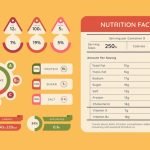When it comes to managing your health, proper nutrition plays a crucial role. For individuals who have specific dietary requirements or those facing challenges in meeting their nutritional needs through regular food, specialized nutritional drinks like Vital 1.5 can be a lifeline. In this article, we will explore the nutrition information of Vital 1.5, breaking down its key components and benefits under various subheadings.

Contents
1. The Basics of Vital 1.5
Vital 1.5 is a high-calorie, high-protein nutritional drink designed to provide complete and balanced nutrition to individuals with increased calorie and protein needs. It is commonly used in clinical settings, such as hospitals and nursing homes, as well as for at-home nutritional support. Let’s delve into the essential nutritional elements of Vital 1.5:
2. Calories
One of the primary functions of Vital 1.5 is to provide a substantial calorie boost. Each 8 fl oz (237 mL) serving contains approximately 375 calories. This high caloric content makes it an ideal option for those who need to increase their energy intake.
3. Protein
Protein is essential for muscle maintenance, repair, and overall body function. Vital 1.5 doesn’t disappoint in this aspect, as it provides 16 grams of protein per serving. This protein source helps individuals meet their protein requirements, especially if they have difficulty consuming enough protein through regular meals.
4. Vitamins and Minerals
Vital 1.5 is fortified with vitamins and minerals, ensuring that consumers receive a balanced blend of essential nutrients. It contains a wide range of vitamins and minerals, including vitamin A, vitamin C, vitamin D, vitamin E, vitamin K, calcium, iron, magnesium, zinc, and many others. These micronutrients play vital roles in supporting various bodily functions.
5. Fiber Content
Fiber is crucial for digestive health, and Vital 1.5 provides a small amount of dietary fiber (approximately 3 grams per serving). While this may not be a significant source of fiber, it can still contribute to overall digestive well-being.
6. Fat Content
Healthy fats are essential for the absorption of fat-soluble vitamins and as a concentrated source of energy. Vital 1.5 contains 11 grams of fat per serving, which includes both saturated and unsaturated fats.
7. Lactose and Gluten
It’s important to note that Vital 1.5 is lactose-free and gluten-free, making it suitable for individuals with lactose intolerance or celiac disease.
8. Specialized Formulas
In addition to the standard formula, Vital 1.5 also offers specialized variants for specific dietary needs. There are options for individuals with diabetes (Vital 1.5 CAL with Fiber for Glycemic Control) and those requiring a high-protein, low-carb diet (Vital 1.5 CAL with Protein).
9. When to Use Vital 1.5
Vital 1.5 is recommended for individuals who have increased nutritional requirements but cannot meet them through regular food. Some common scenarios where Vital 1.5 may be prescribed include:
- Malnutrition: To address protein and calorie deficiencies.
- Post-Surgery: To support recovery and healing.
- Cancer Patients: To combat weight loss and muscle wasting.
- Elderly Individuals: To ensure adequate nutrition in cases of decreased appetite or difficulty swallowing.
10. Consultation with Healthcare Professionals
Before incorporating Vital 1.5 into your diet, it is essential to consult with a healthcare professional, preferably a registered dietitian or physician. They can assess your specific nutritional needs and recommend the appropriate dosage and duration for your unique situation.
In conclusion
Vital 1.5 is a nutritional powerhouse designed to provide essential nutrients, calories, and protein for individuals with specific dietary needs. While it can be a valuable component of a comprehensive nutrition plan, its usage should always be guided by healthcare professionals. Understanding the nutritional information of Vital 1.5 is the first step towards making informed choices for your health and well-being.



